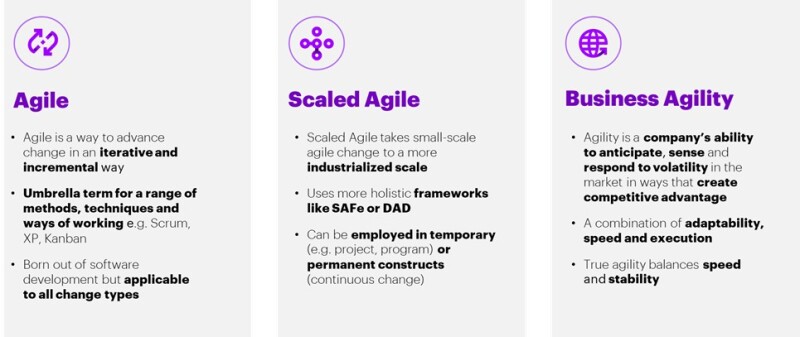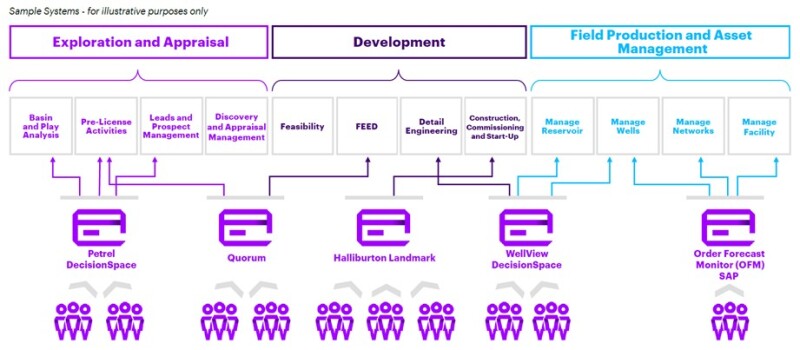The pandemic happened—we can’t escape it. It has affected our personal lives and those of our families, friends, and loved ones. But how have we coped? We have adapted, we have overcome, and we have evolved our ways of working to be just as, if not more, effective in the face of the ever-changing environment in which we exist.
If that’s happening in our personal lives, where else might it be occurring?
My clients, upstream oil and gas companies, are reacting in a similar manner. They’re trying to understand strategic levers, adopting Agile ways of working, and reorganizing their companies to better prepare for the next market shift, i.e., they’re adapting and evolving.
That gets to the focus of this article: The skills needed for individuals facing increased business agility adoption by organizations and how one can best prepare to be relevant in the energy industry as businesses are rapidly and strategically shifting to Agile.
Starting With Why
In his famous book (and TED talk) Start with Why, Simon Sinek talks about leaders inspiring change by helping others understand the “why” behind an idea. I plan to traverse Simon’s Golden Circle (Why, How, What) in this article and maybe add a ring or two of my own.
So why? Why should you care about the shift towards an Agile workforce?
Given the volatile, uncertain, complex, and ambiguous environment in which upstream oil and gas companies are playing, a need exists for being nimble. Energy transition, emerging startups, disruptive technologies—these are just a few of the potential threats organizations need to manage.
That is where you come in. You need to understand new constructs, for example, Agile operating models organizations are adopting, what roles exist within them, and how you can be effective members of these newfound models. Without upskilling, you’re at risk of being overlooked as organizations mature toward true business agility—that’s a pretty strong “why.”
Moving to What
Let’s level-set on what we mean by business agility.

Fig. 1—Agility Framework. Source: Accenture.
In Fig.1, you can see ad-hoc Agile, which is the first step that companies take as they start down the iterative development path. If your organization is here in the maturity journey, try to understand where Agile teams are working and how you might be able to get involved to learn the basics.
If your company is in the middle section, they have likely adopted something like the Scaled Agile Framework. It is the most widely adopted “Team of Agile Teams” framework with the goal of delivering program- and portfolio-level value tied back to the strategic themes of the organization. More to come on this in the sections below.
Finally, we have true business agility. To reach this stage in the maturity journey and become an adaptable and nimble competitor, upstream companies need to expand these concepts into their corporate functions, including human resources.
Upstream companies are reorganizing themselves around these scaled Agile frameworks to better meet the needs of their internal and external customers. They’re rallying around asset classes such as unconventionals and core business functions such as drilling and completions to identify product demand to provide solutions to their end-users.
How are they going about doing this, and where do you fit in?
Persevering With How
How are upstream companies going about making this shift? That answer starts and ends with the value streams.
For context, let’s look at the upstream value stream

Fig. 2—Sample Systems (for illustration purposes only.) Source: Accenture.
The operational value stream would be everything from Basin and Play Analysis through Manage Facility; essentially, this is how an upstream company makes money. The development value stream(s) are the systems and people supporting those systems who can positively affect the operational.
For illustration, if you’re a geophysicist, you might envision an analytics product that can leverage analogous well data combined with seismic interpretations to perform sweet-spot identification and drill fewer wells, thereby saving your company money.
You would be a part of a development value stream, potentially as a Product Owner, working with technical resources to build the product and deploy it for Basin and Play Analysis optimization.
What does that that development value stream look like, and who’s on it?
Continuing With Who
In comes the concept of an Agile Release Train (ART), which is synonymous with a development value stream. It is a program-level construct consisting of a team of Agile teams (typically between 50 and 125 people) working collaboratively; each team builds a component piece of a broader product that adds higher value than a single team alone could.
So let’s talk roles: If the ART teams are Scrum teams, then there will be three main roles:
- Development Team. Cross-functional members responsible for building the analytics product
- Scrum Master. The guardian of the process, typically with a project management background
- Product Owner. The voice of the customer, typically a member of the business with deep subject matter expertise around the solution context in which the product will exist
Depending on your skillset, background, and education, you’ll likely be a fit for one of these three roles; however, that’s not always the case. There are also the ART-level roles such as the Business Owner, Release Train Engineer, Product Manager, and System Architect/Engineer where you may fit as well. I’ll let you discover those on your own.
Finalizing the When
The time is now. Agility is taking over the world. It has now been 20 years since a group of software developers congregated in Utah to create the Agile Manifesto. Since then, Agile has spread well beyond software to include any product development that has changing requirements, uncertain future-state, and a need for early value and fast feedback.
Upstream companies are mapping their value streams, reorganizing around them, and implementing agility at scale. My recommendation is that you start learning about the scaled Agile structure and your potential future within it. Are you a Scrum Master at heart? Maybe a Product Owner in training? Perhaps you have deep technical skills and want to join a delivery team?
Regardless of how you choose to move your career forward, doing so within the confines of the future operating model of scaled agility can help you make the right choices.
Post Scripting With Where
Where can you go to learn more? Here are a few options:
https://www.accenture.com/us-en/insights/technology/business-agility-report-2020
https://www.accenture.com/nl-en/blogs/insights/understanding-agile-and-devops-the-power-of-culture
https://www.accenture.com/us-en/insights/communications-media/agile-organization
[The article was sourced from the author by TWA editor Richa Bansal and TWA advisor Asif Zafar.]


